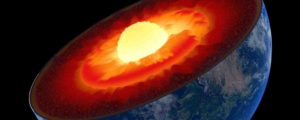
The solid Earth breathes as volcanoes “exhale” gases like carbon dioxide (CO2) — which are essential in regulating global climate — while carbon ultimately from CO2 returns into the deep Earth when oceanic tectonic plates are forced to descend into the mantle at subduction zones. However, the amount of carbon in the sediments and ocean crust that subducts is poorly constrained, as is the fraction of that breaks down in the mantle and contributes to volcanic CO2.
Most subduction zones in the world are complex: the amount of sediment and carbon (C) concentration frequently varies along their length, and at many, some of the sediment reaching the subduction zone is scraped off, so the C in it never gets returned into the Earth. Developing a way to figure out how C cycles at complex subduction margins is therefore critical to understanding our planet.
To establish such a method, researchers Brian M. House and colleagues focused on the Sunda margin along Indonesia, a subduction zone where the amount of sediment changes dramatically as does the proportion of organic and inorganic C, and very little of the sediment actually stays attached to the subducting plate.
Erosion from the Himalayas and underwater sediment “avalanches” bring a tremendous amount of sediment that is rich in organic C to the northeast section of the margin while the southwest portion is inundated by sediment rich in calcium carbonate (CaCO3) microfossils from the Australian continental shelf.
To account for this the team made a 3D model of the sediments and their composition across thousands of square kilometers outboard of the margin, which allowed us to more accurately quantify C in sediments throughout the region. House says they “estimate that only about a tenth of the C reaching the margin makes it past the subduction zone while the rest is scraped off the plate into the enormous wedge of sediment offshore of Sumatra and Java.”
House and colleagues estimate that the C returning into the Earth is much less — maybe only a fifth — of what volcanoes expel each year, meaning that the margin represents a net source of C into the atmosphere and that C from something other than the subducting sediments is released. “The sediments subducted into the Earth also have a different C isotope composition than that of volcanic CO2, so we think that inorganic CaCO3 in the ground underneath Sumatra and Java as well as C in the oceanic plate that carries sediment into the subduction zone release CO2 that travels back into the atmosphere.”
These are two possible CO2 sources that, while extremely large, haven’t received much scientific attention. By presenting a new method for investigating tectonic C cycling in a place as complicated as the Sunda margin, says House, “We hope to spur new interest in understanding the full range of processes by which the solid Earth breathes over geologic timescales.”
Reference:
Brian M. House, Gray E. Bebout, and David R. Hilton. Carbon cycling at the Sunda margin, Indonesia: A regional study with global implications. Geology, 2019
Note: The above post is reprinted from materials provided by Geological Society of America.










